Special Report
11 Retailers Closing the Most Stores

Published:
Last Updated:

As U.S. employment continues to improve in the years after the recession, Americans are more likely to have disposable income to spend on clothes and goods. Retail sales in the United States rose for the third straight month through January. Unfortunately for many brick-and-mortar retailers, an increasingly large share of Americans are shopping online, and sales at electronics and appliance stores and department stores fell by roughly 5% each compared to the same time last year.
American brick-and-mortar retailers have had to make significant adjustments, and often this involves closing down stores. Major retailers such as Walgreens, Sports Authority, and even Walmart plan on closing at least 100 stores in the next year or so.
Companies close stores for different reasons. In some cases, the shuttering of a particular store may be the product of nothing more than optimization and not the signal of a serious crisis. In the case of Office Depot, which is in the process of closing approximately 400 locations due to its 2013 merger with OfficeMax, the new company is going through the process of consolidating operations and closing down excess stores.
Click here to see the 11 retailers closing the most stores.
In many cases, the shutting down of dozens, if not hundreds of store locations is a product of deeply struggling businesses. This is the case for casual apparel store American Eagle, which plans on closing 150 locations by 2017. In 2008, the retailer reported a net income of $400 million. By 2015, that figure had fallen to just 80 million.
In the case of Sports Authority, bankruptcy itself — caused by debt and weak retail sales — created the need for store closings. The retailer announced it will shutter 140 locations over the next few months.
To identify the companies closing the most stores, 24/7 Wall St. reviewed large U.S. retailers that have announced store closings for 2016 or that are in the process of multi-year plans to reduce store counts. Company earnings, store and employee counts, as well as other financial information came from SEC filings.
Update: to reflect the recent announcement by Tailored Brands: Men’s Wearhouse and Jos. A. Bank have been added to the list, as an anticipated 109-119 will be closed during fiscal 2016 for the former, and between 129 and 139 for the latter during fiscal 2016.
These are the 10 retailers closing the most stores.

11. Wolverine World Wide
> Closings: 100
> Annual net income: $123 million
> 1-year share price % chg.: -35.2%
> Industry: Apparel footwear & accessories
Wolverine World Wide is one of the world’s largest footwear companies. The company designs, manufactures, and markets products under a range of brands, including Hush Puppies and Keds, as well as licensed footwear products from brands such as Cat and Harley-Davidson. Financially, the company has performed relatively well in recent years, although Wolverine World Wide’s operations shrank slightly last year. In 2015, the company reported revenue of $2.69 billion, down 2.5% from $2.76 billion the year before. In response to poor performance, Wolverine cancelled two of its brands, Patagonia Footwear and Cushe, and announced it would close 100 stores this year. The company already closed over 100 stores in 2015.
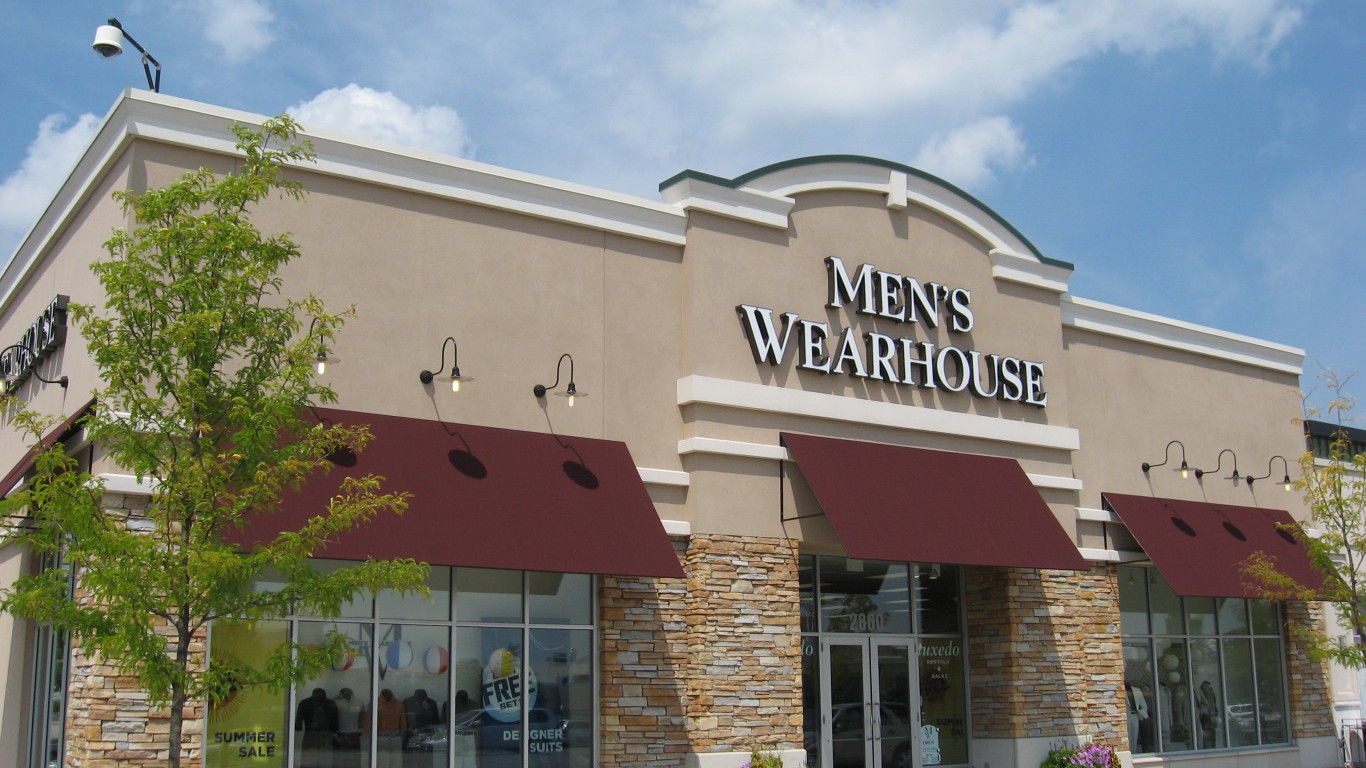
10. Men’s Wearhouse
> Closings: 109 to 119
> Annual net income: $0
> 1-year share price % chg.: N/A
> Industry: Menswear retail
On March 9, holding company Tailored Brands announced massive operating losses, and as a result, said it would close 250 stores in the coming fiscal year. A large share of these will be Jos. A. Bank locations, and the remainder will be Men’s Wearhouse locations. This includes between 100 and 110 Men’s Wearhouse and Tux locations, as well as all nine existing Men’s Wearhouse outlet stores.

9. Jos. A. Bank
> Closings: 129 to 139
> Annual net income: $0
> 1-year share price % chg.: N/A
> Industry: Menswear retail
Tailored Brands, the holding company that owns Jos. A. Bank and Men’s Wearhouse, among other fashion brands, recently announced its plans to close 250 stores during fiscal year 2016. The closures will consist of 80 to 90 Jos. A. Bank stores and 100 to 110 Men’s Wearhouses. The company will also close all 49 Jos. A. Bank outlets, and all nine Men’s Wearhouse outlets. In total, the company is expected to close between 129 and 139 Jos. A. Bank locations in the coming year. Jos. A. Bank was founded in 1905, and with 625 locations is one of the largest menswear retailers in the U.S and Canada. Upon the announcement, which is expected to return Jos. A. Bank to profitability, the Tailored Brands stock price jumped more than it ever has since becoming public in February.

8. Chico’s FAS
> Closings: 120 (2015-2017)
> Annual net income: $65 million
> 1-year share price % chg.: -24.9%
> Industry: Apparel stores
Chico’s FAS is a women’s apparel and accessories retailer selling three main brands: Chico’s, White House Black Market, and Soma. Together, the company operates 1,518 boutiques and outlet stores throughout North America. In 2006, Chico’s FAS reported a net income of $194 million. The company has posted lower annual profits since then, most recently posting a net income of $65 million in 2015. Chico’s is one of many clothing stores losing market share to Amazon and other online retailers. Last February, the company announced it would close 120 stores between fiscal 2015 and 2017. Most closings will be of underperforming Chico’s and White House Black Market locations.
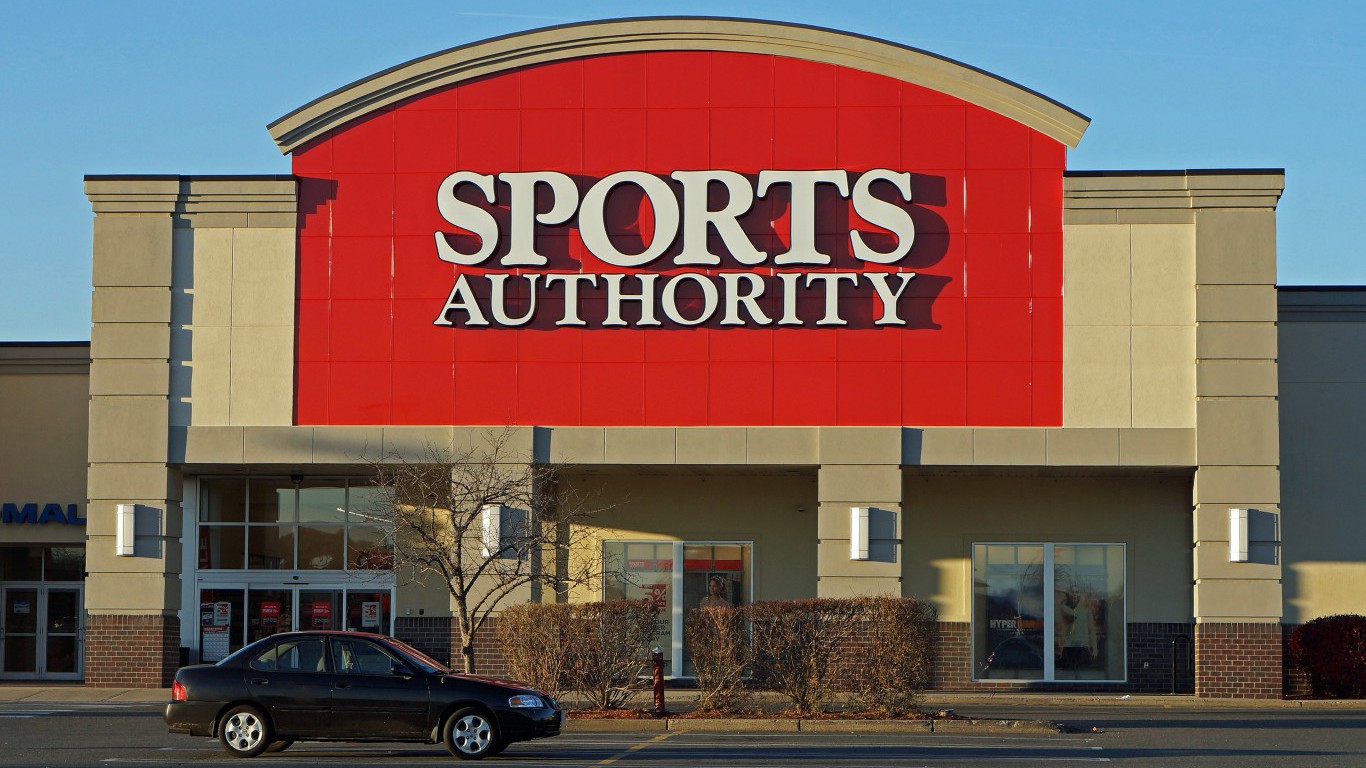
7. Sports Authority
> Closings: 140
> Annual net income: N/A
> 1-year share price % chg.: N/A
> Industry: Sporting goods
Sports Authority is the fourth-largest sporting goods chain in the U.S. In March, Sports Authority announced it was filing for Chapter 11 bankruptcy protection with the intent of restructuring the company. Analysts blame the bankruptcy on Sports Authority’s debt and the company’s failure to adapt to evolving trends in consumer behavior. While most locations will remain open, the company announced it will close or sell two distribution centers, as well as about 140 stores — nearly one-third of its approximately 450 U.S. stores. Sports Authority is among the many retailers losing ground to online retailers.

6. Finish Line
> Closings: 150 (2016-2020)
> Annual net income: $82 million
> 1-year share price % chg.: -20.6%
> Industry: Specialty retail
U.S. sporting goods and footwear store Finish Line expects to close 150 of its 634 locations over the next four years. While this is less than Walmart’s 154 announced store closures in the U.S., this represents is a much larger share of the company’s total operations. Walmart has more than 4,500 locations in the U.S. — eight times as many as Finish Line’s 550 locations across the country. Since 2009, the company has reported positive net earnings, but in the last quarter of 2015 the retailer reported a $22 million operating loss. Shares of the company are down 22% in the past 12 months.
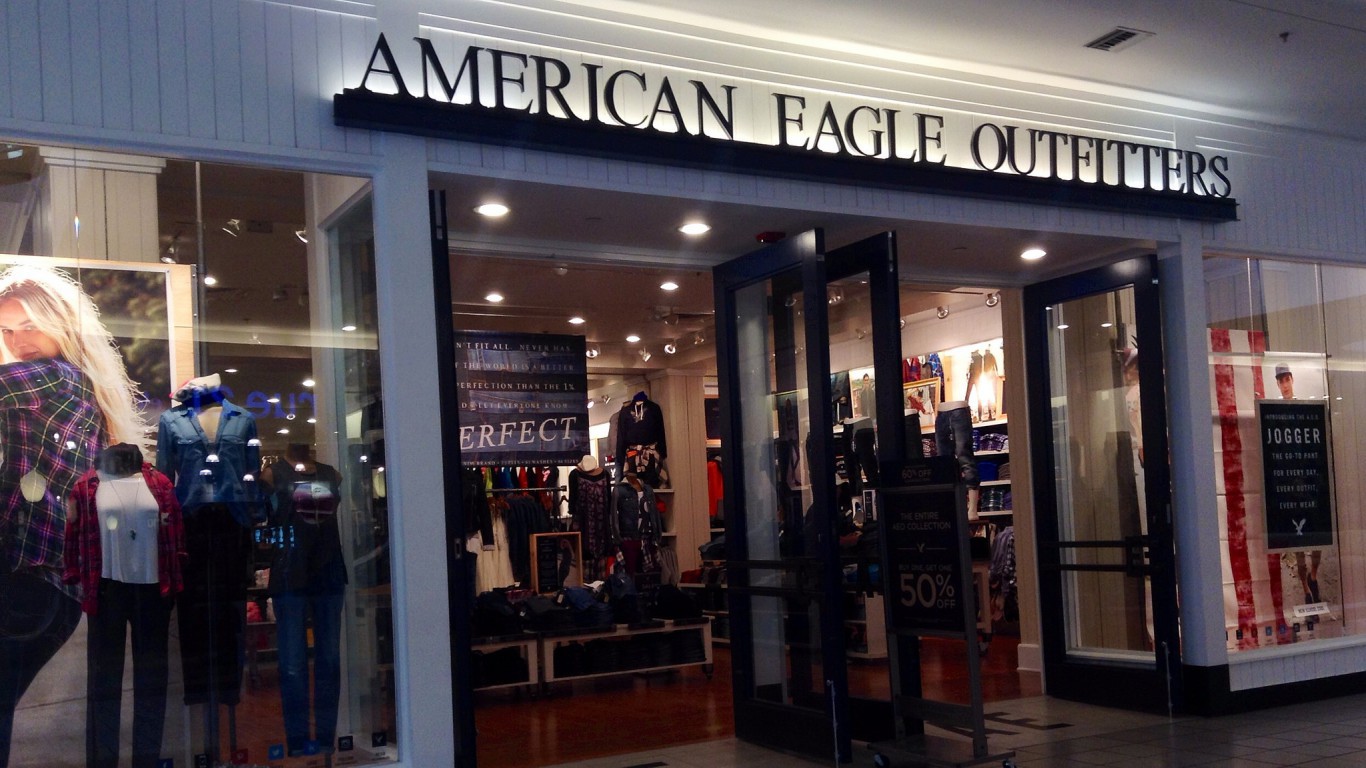
5. American Eagle
> Closings: 150 (2014-2017)
> Annual net income: $80 million
> 1-year share price % chg.: -2.9%
> Industry: Apparel stores
After peaking at $400 million in fiscal 2008, American Eagle Outfitters’ net income has steadily declined over the past decade. Most recently, the company reported a net income of $80 million in fiscal 2015. American Eagle is one of many clothing retailers facing declining sales that announced plans to close stores in the coming years. In 2014, American Eagle announced it will close 150 stores over the next three years. To compete in an industry that is rapidly shifting to online commerce, the company said it will roll out a new website intended to be more mobile-friendly.
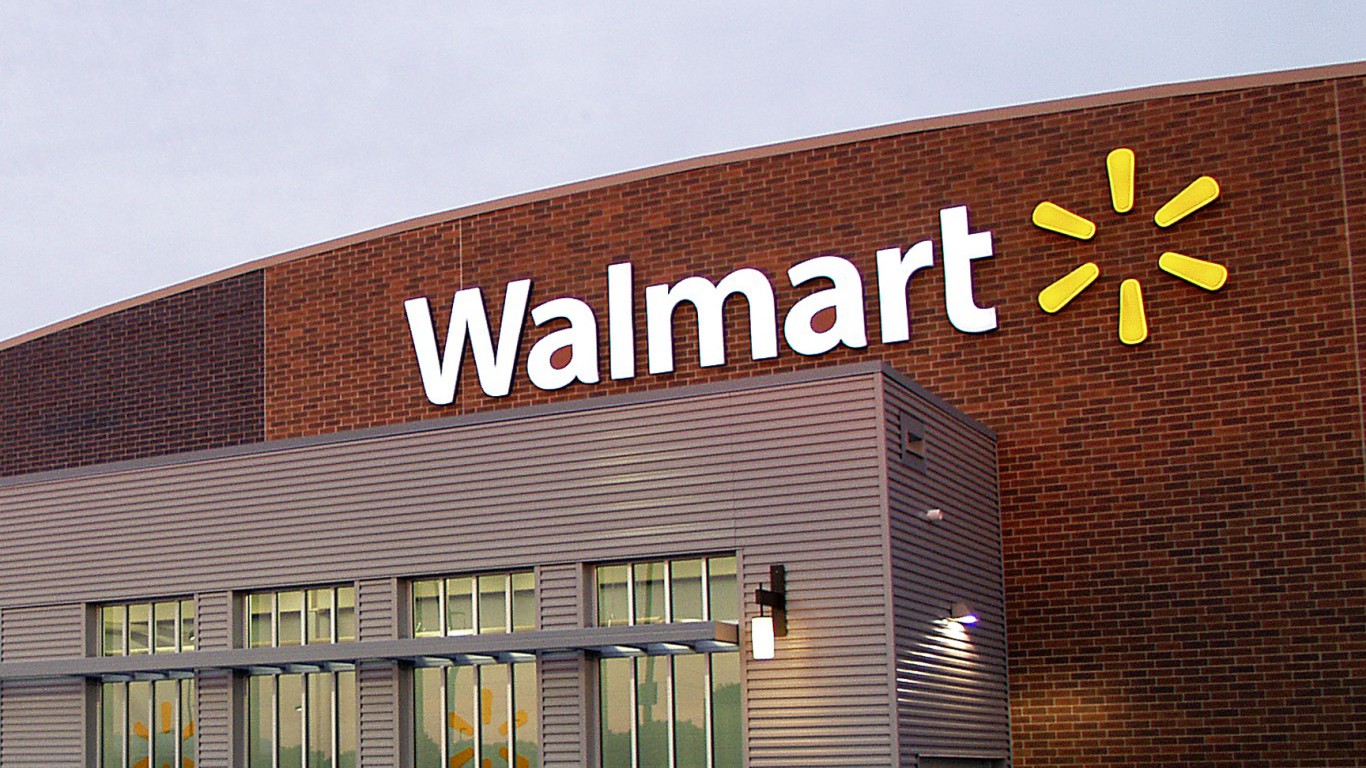
4. Walmart
> Closings: 154
> Annual net income: $16.4 billion
> 1-year share price % chg.: -17.9%
> Industry: Discount stores
Many of the retailers on this list face concerns about their long-term prospects. While Walmart shares declined 18% in the past 12 months, the company remains the largest company in the country, as well as one of the most profitable. This is the case even as e-commerce sites such as Amazon have eaten into most brick-and-mortar retailers’ bottom lines. The company has recorded a net income of at least $15 billion in each of the past five years. In January, Walmart announced it would be closing approximately 270 locations around the world, including 154 stores in the United States, subtracting from its total of roughly 11,600 worldwide. Much of this may be the company optimizing its locations, as it also expects to open several hundred new stores worldwide by the end of 2017, including 60 additional Supercenters.

3. Walgreens
> Closings: 200 (2015-2017)
> Annual net income: $4.2 billion
> 1-year share price % chg.: -3.8%
> Industry: Drug stores
Unlike many companies that are closing stores, Walgreens is doing relatively well. Walgreens Boots Alliance, Walgreens’ holding company, reported a net income of $1.9 billion in fiscal 2014 and more than double that income the year after, at $4.2 billion. Last October, Walgreens announced its intention to buy fellow drugstore Rite Aid for approximately $17.2 billion in cash. As part of a restructuring program announced prior to the proposed acquisition, Walgreens will close approximately 200 of its 8,173 stores. As of the end of fiscal 2015, 84 of these closures had been completed. Walgreens, however, would gain the approximately 4,600 stores that Rite Aid currently operates upon the successful acquisition of the former rival. The likelihood of this occurring depends on the approval of U.S. regulators. To win regulatory approval, Walgreens has stated it would sell as many as 1,000 of its own stores.
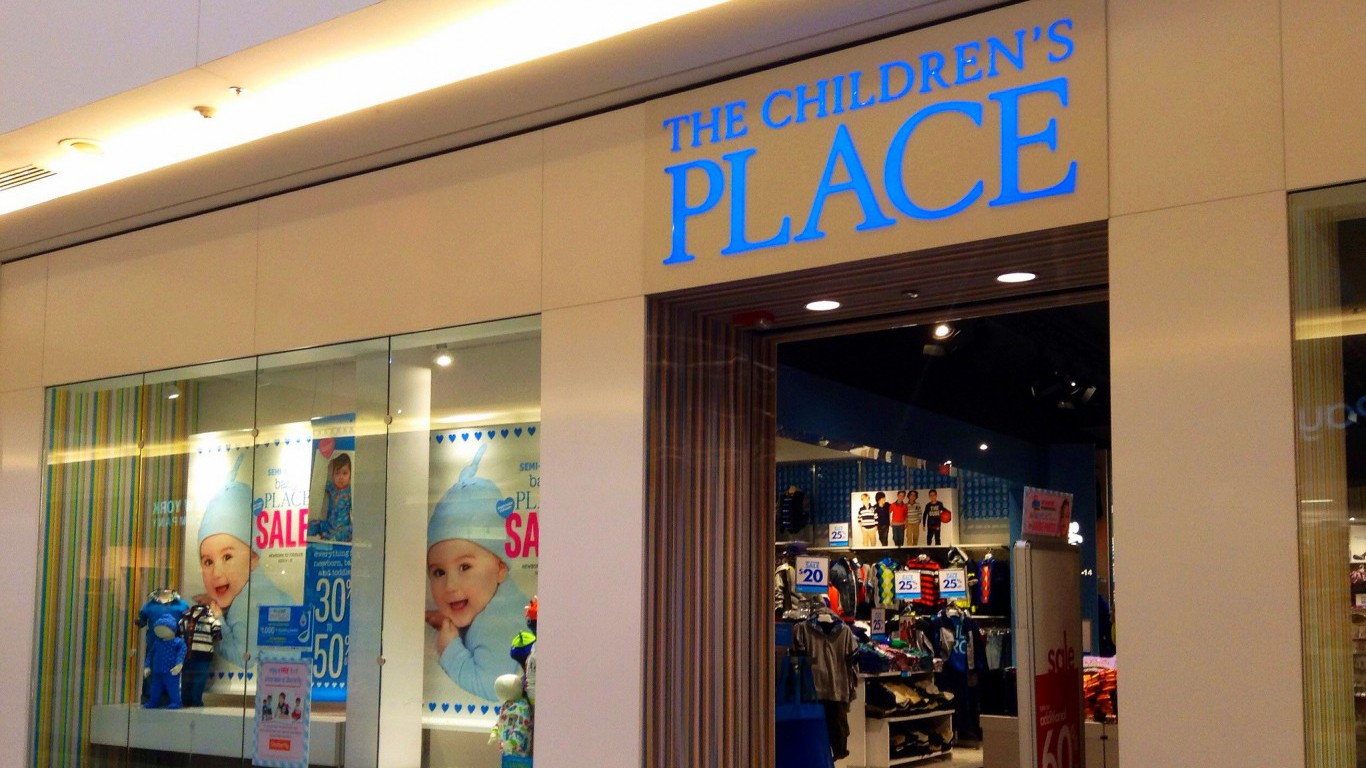
2. Children’s Place
> Closings: 200 (2015-2017)
> Annual net income: $57 million
> 1-year share price % chg.: 21.1%
> Industry: Children’s apparel
Children’s specialty retailer Children’s Place announced in March 2015 it would increase the number of locations it planned on closing from 125 to 200 locations through 2017. This total is greater than nearly every other retailer on this list, and is perhaps more indicative of the company’s problem given its small size. As of the end of October 2015, there were only 1,085 Children’s Place stores in North America. In contrast, Walgreens, which is closing the same number of stores, had 8,173 locations as of August 2015. Six years ago, Children’s Place reported a net income of $89 million. Last year, Children’s Place reported a net income of just $57 million.
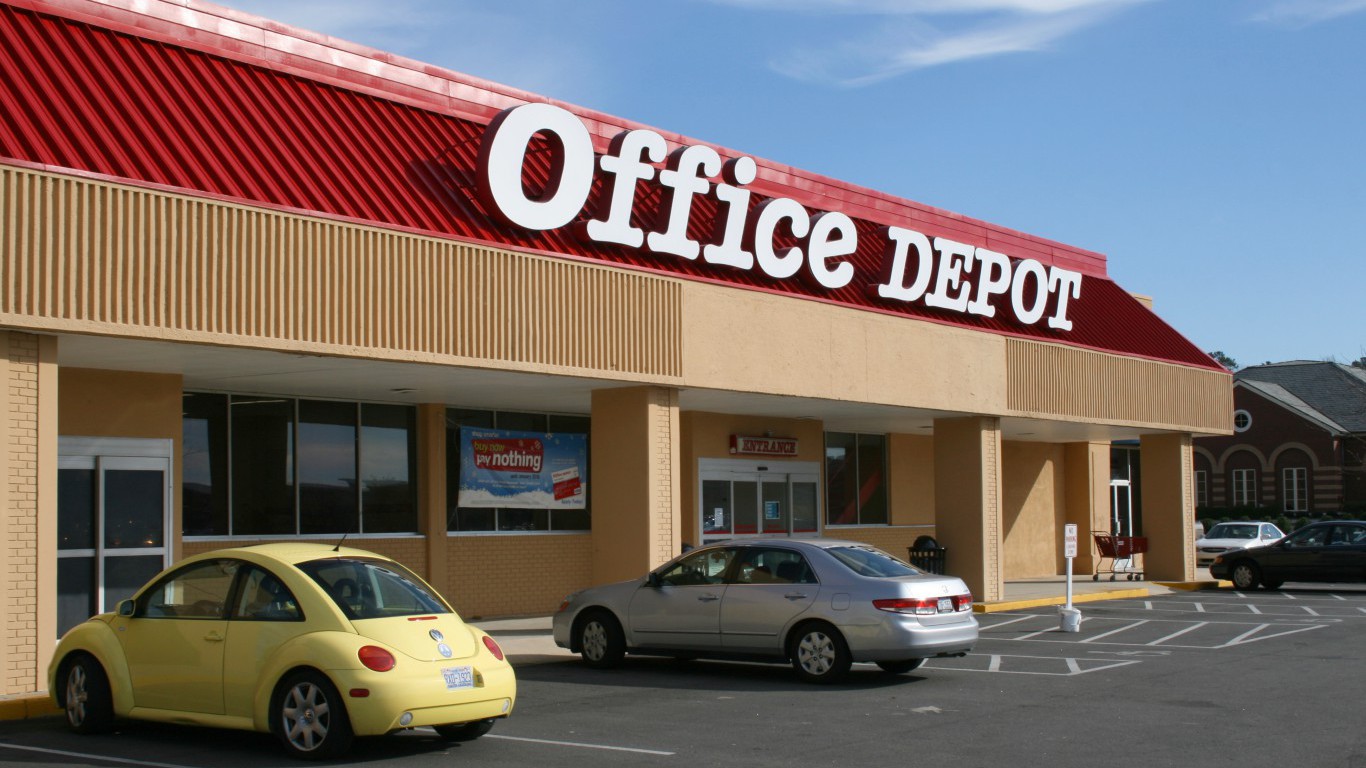
1. Office Depot
> Closings: 400 (2013-2016)
> Annual net income: $8 million
> 1-year share price % chg.: -42%
> Industry: Office supply
As workspaces across the country transition from pen and paper to digital tools, traditional office supply retailers suffer. Office Depot has reported losses in six of the last eight years, and is currently in the process of closing hundreds of locations. Another factor leading to these closings may have been the company’s 2013 merger with OfficeMax. The new company needs to consolidate operations and said it will be closing 400 locations by the end of 2016. Early last year, rival office supplier Staples announced its intention to acquire Office Depot in an effort to compete against Amazon and other e-commerce companies. The deal requires the approval of both the Federal Trade Commission and the European Commission, and would likely result in more store closings. So far, the EC has approved the merger while the FTC has denied it.
Correction: Due to a fact-checking error, an earlier version of this article incorrectly stated that Finish Line would close 150 stores in 2016. In fact, it will be closing 150 stores over the next four years.
Want retirement to come a few years earlier than you’d planned? Or are you ready to retire now, but want an extra set of eyes on your finances?
Now you can speak with up to 3 financial experts in your area for FREE. By simply clicking here you can begin to match with financial professionals who can help you build your plan to retire early. And the best part? The first conversation with them is free.
Click here to match with up to 3 financial pros who would be excited to help you make financial decisions.
Thank you for reading! Have some feedback for us?
Contact the 24/7 Wall St. editorial team.